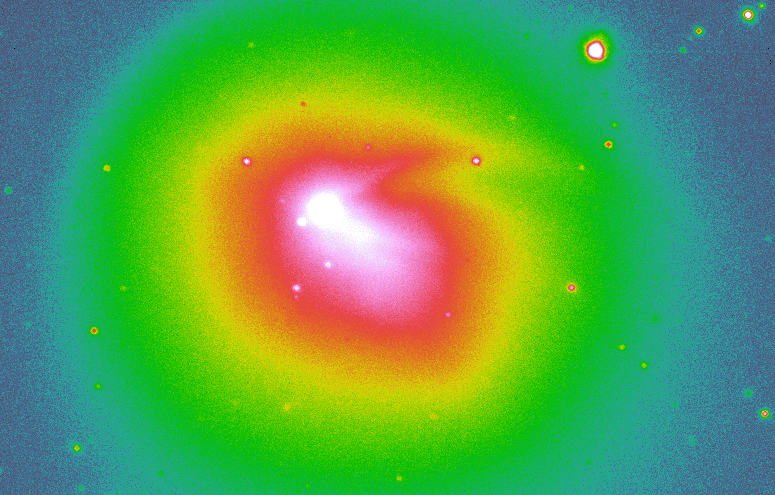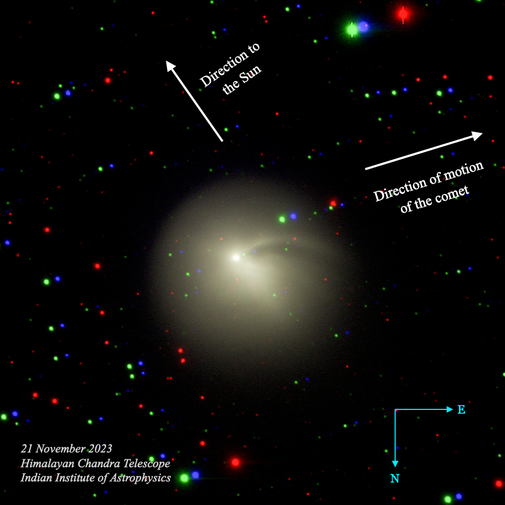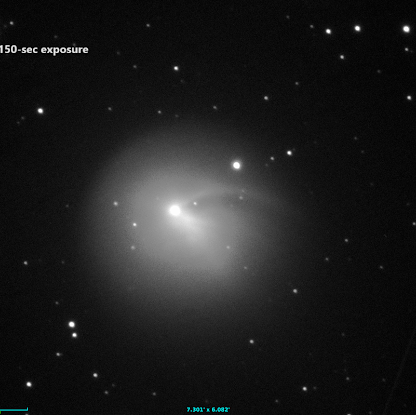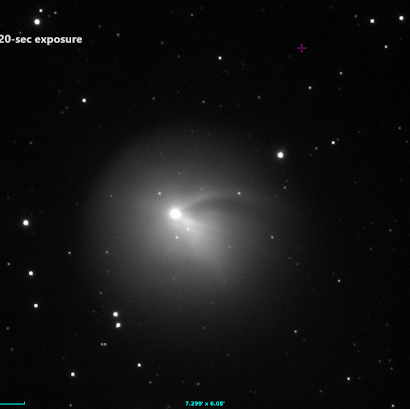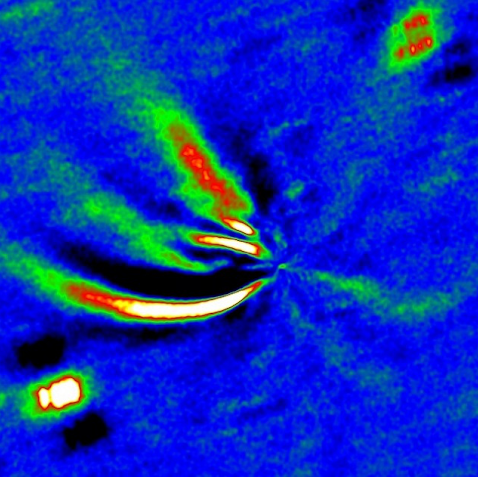Comet 12P/Pons-Brooks
We have used the Himalayan Chandra Telescope (HCT) in Hanle, Ladakh to photograph the Comet P12/Pons-Brooks on 21 November 2023. This comet has recently attracted much attention from the astronomy community and the media due to its many outbursts of gas and dust, and has been dubbed the 'Devils Horn Comet' or the 'Millennial Falcon' due to its appearance. It will become brighter in the coming months and may even become a naked eye comet. This composite image is an overlay of individual exposures using a red, blue, and green filter respectively. Since the comet is moving rapidly across the sky, when we co-add the three images centred on the comet, we see the stars from each of the exposures at a different location and of their respective filter colours. The bright arc towards top right is an outburst from the coma and the darker lane below it is the shadow cast by the nucleus of the comet on the surrounding gas. The spherical atmosphere seen around the centre is about 350,000 km in diameter.
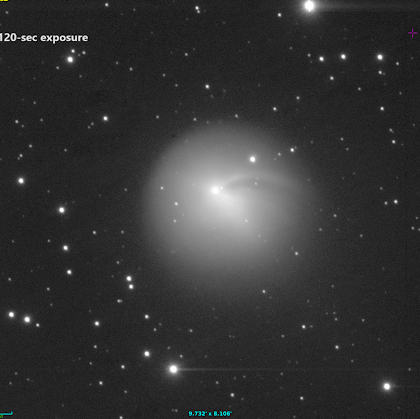
The Comet in "r"-filter
Comet P12/Pons-Brooks was discovered in 1812 and orbits the Sun with a period of 71 years. During its earlier approaches to the Sun, astronomers had observed multiple ejections of gas and dust from its nucleus, which typically gave it an appearance of being horned. This approach seems no different. It attracted the world’s attention this visit when in July it suddenly started behaving very unusually – producing outbursts – sudden, large releases of dust and gas, so strangely that it was called `devil-horned’ comet in the media because the emitted clouds of ice and gas looked like a gigantic pair of horns. Other resources say it looks like the Millennium Falcon spaceship from Star Wars. This comet is what is called a cryovolcanic comet – it has a solid nucleus filled with a mix of ice, dust, and gas. It is one of only 10 to 20 known comets with active ice volcanoes. As solar radiation heats the comet, the pressure builds up inside the nucleus and large cracks develop in the nucleus's shell, through which billions of kg of dust and gas jet out into space. Since dust and ice are excellent reflectors of sunlight, the comet suddenly appears to get much brighter, even 100 times the original brightness which happened already four times since July. In the case of 12P/Pons-Brooks, the large nucleus of the comet casts a shadow around the cloud of gas and dust from the outburst which is the possible reason for the dark ‘jet’. As the dust sweeps past the body of the nucleus, it acts like air passing over the wing of an airplane, and that creates the hollowed-out shape and horns. The comet is still far from the Sun – beyond the orbit of Mars, and thus it has no tail yet, but the coma (atmosphere) is already ~350,000 km wide.
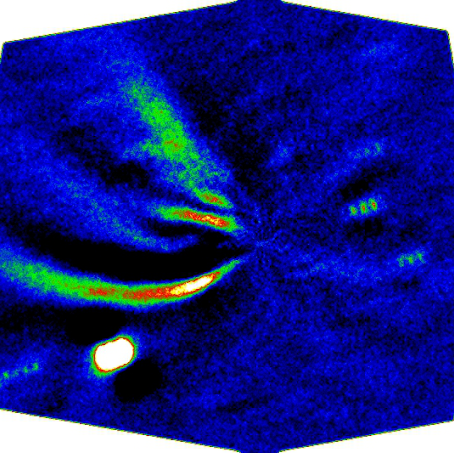
The comet after the removal of the smooth emissions.
In these images, the smooth emission has been removed by a technique called Larson-Sekanina digital filter, to show finer structures in the coma. Four tails are clearly visible in g filter (left), while in the i filter, there is a jet in the opposite direction on the sky (credits: M. Safonova of IIA and Marek Husárik of Slovakian Astronomical Institute).
This comet will pass closest to the Sun on 21 April 2024 and will have its closest approach to Earth on 2 June 2024 (when it will pass 232 million km away from us). It is expected that this comet will be easily seen with small telescopes or a pair of binoculars, or even with the naked eye at that time. Comets always hold great fascination for all of us, and we will photograph this comet with our telescopes in the coming months to share its journey with everyone.
This comet was observed by Margarita Safonova, Pallavi Saraf, Manjunath Bestha and Pramod Kumar of IIA with the HCT, which is remotely operated from IIA CREST campus in Hosakote.
In mid-November, it was reported that the comet had suffered a possible core break-up, or that it could even be a binary comet. We do not see the second core in our images, but some bright patch is seen in this i-filter false-colour image, showing previous 'second core' dissipating into jets. To better see the finer inner structure of the coma, we have created an intensity map by removing smooth emission using Larson-Sekanina digital filter. Credits: Margarita Safonova (IIA) and Marek Husárik (Slovakian Astronomical Institute).
